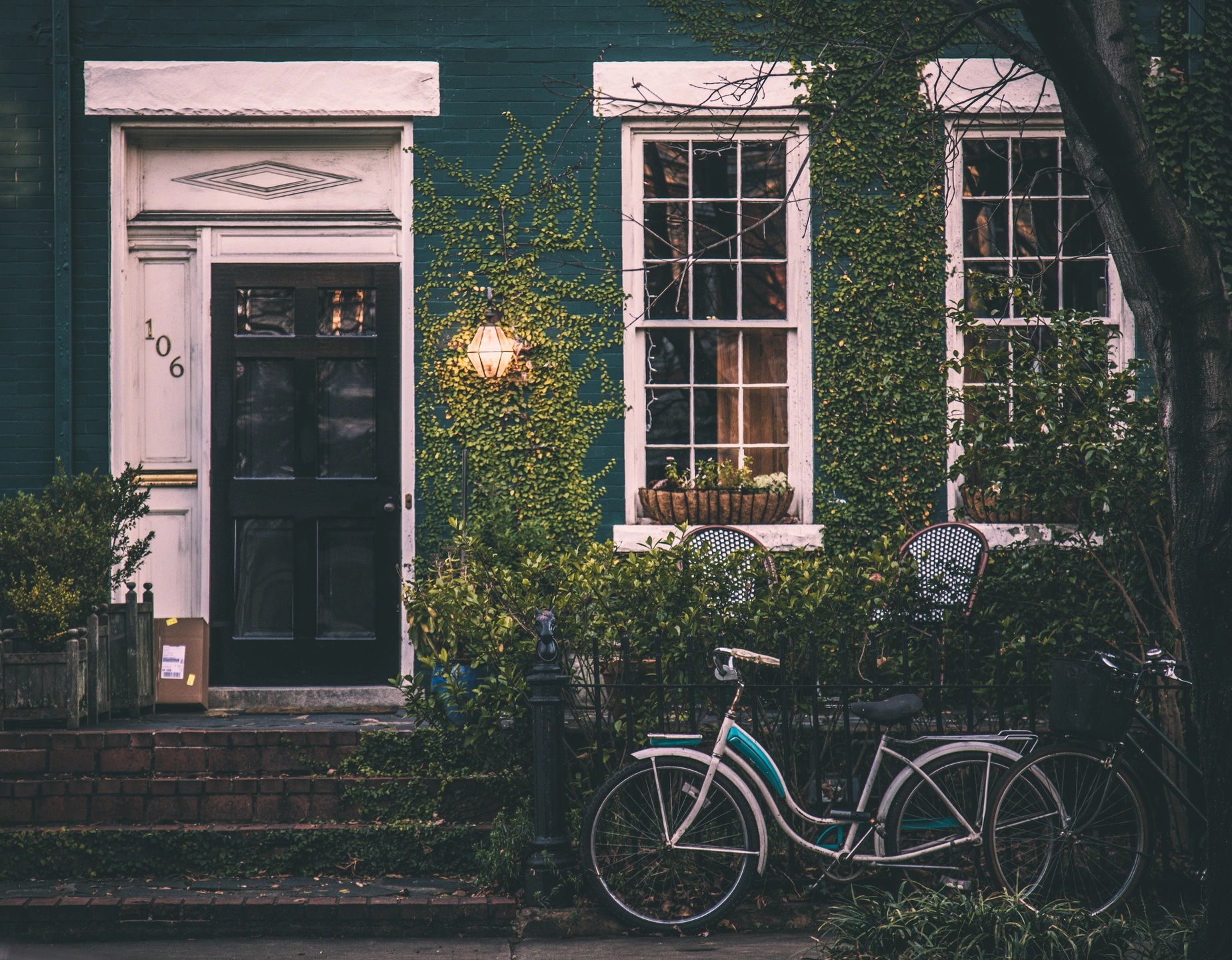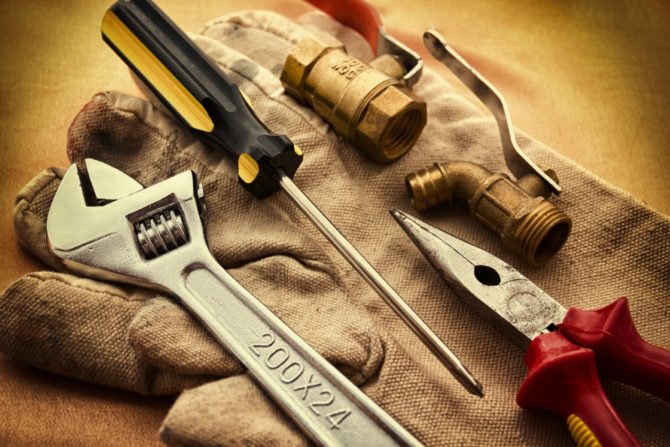 The Impact of a Property Inspection on Property Valuation
The Impact of a Property Inspection on Property Valuation
If you are currently looking to purchase a new home here in the Pan Handle of Florida, you may want to consider the following. During your search for your new home, the important factor of property condition may have caught your attention with several properties. Regardless of the age of the property, a pre-existing home may be in poor condition if it has not been well-maintained by the owner. On the other hand, even older homes may be in amazing condition and could have recently been remodeled to make them like-new again. When you are looking at a home, remember that it is difficult to determine a property’s true condition just by looking at the surface alone.
Some buyers are intentionally looking for older homes in poor condition with the intentions of creating value through improvements. Others prefer to buy a property that is well-maintained and in move-in ready. Obtaining a property inspection is not a required part of the real estate purchase process in Florida, but it is a step that many buyers choose to take. You may be wondering how a home inspection impacts a property’s appraised value or if it plays a role in valuation at all. With an improved understanding of what these two reports are, you can better understand their impact on your buying decision.
The Components of an Appraiser’s Valuation
In a typical real estate appraisal, the appraiser reviews the property’s value from three different perspectives. At his or her discretion, the final value may be determined through a reconciliation of all three methods or only through one or two of the methods. These methods include a review of sales comps, the property’s replacement value and the income capitalization approach. In many cases, the latter method is used for investment or income-producing real estate. The sales comp approach requires the appraiser to review several comparable properties that are located very close to the subject property and that have recently sold. The price per square foot of these properties is analyzed by the appraiser. Keep in mind that the appraiser may make adjustments based on key selling features in the homes and other notable differences while reconciling the data and analysis. The replacement value approach considers the estimated cost of building a similar home from start to finish, such as if the home was completely destroyed and needed to be rebuilt. It is based on construction costs in the area at the time as well as on the general type of finish-out in the home.
Property Inspection Reports
Many Florida buyers request a home inspection to be completed on a property that they are interested in so that they can learn more about the true condition of the home. Many potential repair issues may go undetected by an untrained eye. Some issues may require in-depth review by a skilled inspector and even special equipment or tools to uncover. A property inspector will usually review all major components of the home, such as the foundation, the roof, the major appliances, the electrical system, the plumbing system and more. While he or she is not licensed in each of these areas usually, he or she can provide insight on areas of concern that should be inspected by a licensed specialist.
Repair items that are identified by a property inspector are typically categorized based on their severity. For example, some cosmetic issues may be noted, such as cracked tile. Other issues, such as an exposed electrical wire or loose stair railing, may be classified as urgent because they pose a safety hazard.
The Impact of a Property Inspection on Property Valuation
It is important to understand that an appraiser is not always provided with a copy of a property inspection report. In some cases, the two professionals walk the property on the same day and complete their reports at roughly the same time. If the timing of your purchase plans permits, it may be wise to obtain a property inspection before paying for an appraisal. In some cases, the condition of a property may be so dismal that a buyer decides to walk away from the transaction altogether. In this case, delaying the appraisal order can save the buyer money. In many cases, some areas of concern that have been outlined by the property inspector may impact the appraiser’s valuation. The appraiser’s attention may be brought to areas of concern after reviewing the inspection report.
The two primary valuation methods that an appraiser may use for an owner-occupied or non-investor property are related to the property’s condition. These are the sales comparable approach and the replacement value approach. Remember that the appraiser will adjust the price per square foot based on key selling points as well as negative factors, such as a cracked foundation. Likewise, the appraiser will discount the replacement valuation by any significant repair costs.
The Impact of a Property Inspection on Property Valuation
You may think that all buyers would want to walk away from a property that has many smaller repair issues or at least one serious issue, but this is not the case. Some buyers will use this information as a basis for negotiating a better deal on the sales price. Others will ask the seller to fix the problem areas before closing. If the seller agrees to one of these two options, the closing may take place under the revised contract terms.
There are, however, many instances when a buyer will walk away from a home. For example, if the seller is not willing to negotiate on the sales price or is not willing to repair the damage before closing, the buyer could decide not to move forward with the purchase. For some buyers, the specific type of damage or the severity of the damage may be a deal-breaker. For example, if it is determined that black mold is growing in the home, the buyer may not feel comfortable living in the home even if professional mold remediation is completed. This is a matter of preference based on his or her comfort level.
Keep in mind that some buyers also do not want to inherit a laundry list of repair issues from the seller. They prefer to buy a property that has been well-maintained. Regardless of any discounts or concessions that the seller may be agreeable to, the buyer may simply not want to deal with making those repairs on his or her own.
Now that you understand more about how an appraisal and property inspection could be related, it makes sense to consider ordering a property inspection and reviewing the inspection report closely before ordering the appraisal.
 Florida Rainy Season: How You Can Protect Your Home from the Elements
Florida Rainy Season: How You Can Protect Your Home from the Elements
Florida is called the “Sunshine State” for a good reason. It is gorgeous and warm about 95 percent of the time. However, the other five percent of the time, it is rainy and hurricane seasons. Home owners who live in Florida need to take the proper precautions every year to make sure that their homes are in good shape and well enough to battle the elements. Making necessary updates to your house now, before the storm hits, will in turn save you thousands of dollars rather than pouring out thousands of dollars to replace things. Here are some tips on keeping your house protected from Mother Nature during Florida’s rainy season and hurricane season.
Tip #1: Make sure your insurance is up to date with all the necessary coverage.
Make sure that your home owners’ insurance has the proper coverage on your policy. For example, your home is depreciating in value every year, meaning that the cost to insure it will be higher. It is important to check the amount of coverage that you’ll need every couple of years. You may want to get a second opinion of insurance if your coverage amount seems somewhat off to you. Your Home Owner’s policy will not cover flooding, however, there is still an option on how to get flood insurance coverage for your home. You can purchase flood insurance through the National Flood Insurance Program. This service would be a necessity for people living in high-risk flooding areas of Florida. If you think that you are in a high-risk flooding area of Florida, and you want to get flood insurance, do not hesitate – do it now! There is a 30-day grace period before your insurance policy goes into effect.
Tip #2: Protect Your Roof!
Protecting your roof can save you thousands of dollars in the long run during rainy season and hurricane season. It is important to note that you should inspect your roof after every storm to look for missing shingles and for water damage, not just before the storm. You should hire a roof inspector to properly inspect the roof before the rainy season or hurricane season begins. Roof inspectors can give you a more in-depth look at the problems of your roof (if there’s any at all). If there are weak areas on the roof, the roof inspector should secure them with hurricane straps so the roof will stay intact during a natural disaster. Replacing a roof is expensive, so it’s best for you to take care of your roof to help it last for years to come!
Tip #3: Do a Thorough Exterior Inspection of Your Home
It is important that when we are talking about home inspections, we cannot overlook the Foundation. The home owner should walk about the foundation of the home and carefully inspect all areas. Check for any sign of water damage around the outside of the home. Any loose soil? That could also be a sign of water damage that needs to be repaired. On the outside of the home, if there are bubbles in the exterior paint that means that moisture and water are getting through to the inside of the house. Also, it is important to inspect all downspouts around your home. Make sure that they are directed away from your home. This can cause water to drain in excess near your foundation and water will then be getting inside under your foundation. The homeowner also should install weather-stripping around the doors and windows. This helps the doors and winds can withstand high gusts of wind and rain.
Tip #4: Do a Thorough Interior Home Inspection
When performing an interior home inspection, it is important to check and make sure that all your electrical outlets are about 3 inches above the floor. This will help ensure that your appliances will survive the flood without an electrical power surge. You also need to look for any cracks or breaks in the walls where water could collect in the event of a flood and potentially form mold. You may want to consider dry-proofing your home by painting with wall sealants to keep water out and adding foundation vents to let water flow through your home instead of collecting in one big pool of water.
Tip #5: Protect Your Home from Mold
In the Florida Rainy Season, it is imperative that you check your home routinely for small leaks and any sign of water damage around your exterior or interior of your home. Mold is a fungus that likes to grow in moist areas and it can begin growing just 24 hours after a flood happens. In certain cases, mold can also occur through a small leak that was not attended to in time and it got progressively worse before the homeowner noticed. As far as insurance goes, most insurance policies have stipulations that the coverage will only cover mold caused by natural disasters. Check your policy again to be sure if mold from water damage is covered when the water damage was not caused by a natural disaster. To try to minimize the chance that your home will mold, you can do these precautionary steps:
• Have air conditioning in your home.
• Use a dehumidifier occasionally.
• Have tile in your bathroom instead of carpet.
• Always use a cleaner that has bleach when cleaning in moist areas.
• Check all seals around sinks, bathtubs, anywhere water will be present.
Tip #6: Protect Your Home from Hurricanes
As we are talking about inspecting your home for water damage for the upcoming Rainy Season, let us not forget about Hurricane Season, which can be tough for many Floridian home owners. When hurricane season begins, it is important to do an inventory of your belongings, meaning, take a few photos of your possessions so that in the event your home was destroyed by a hurricane, it would make filing insurance claims a little bit easier. It is also important to inspect your garage door and make sure it is reinforced. Many people do not think about the garage door, but if it is not reinforced, powerful winds gusts get can inside of your home, causing severe damage to the interior windows, doors, and the interior of your roof.
When inspecting your home to make it hurricane proof, remember to check your windows and doors for cracks and make sure they close properly. In the event of a hurricane, high wind gusts could rip your door off of its hinges if the door is not properly closed. Broken windows will let rain inside of your home causing water damage. In the event of a hurricane, use storm shutters on your doors and windows or literally board them up with plywood.
Protecting your home is a huge priority during Florida’s Rainy Season and Hurricane Season. If you commit to taking preventative measure now, before something happens to your home, it pays off in the long run. For example, if you ever want to sell your home, it will sell much faster if there’s never been any kind of water damage or damage from a natural disasters. Taking care of your home now, will definitely help your home to stand up to the elements during Mother Nature’s favorite time of the year.
 Top 5 Golf Courses in Pensacola Florida
Top 5 Golf Courses in Pensacola Florida
After we Do Your Home Inspection Make sure to Play These Top 5 Golf Courses in Pensacola, Florida!
Are you serious about retiring in Florida and spending your days on a beautiful golf course? Are you a serious golfer or golf enthusiast that is interested in moving to Pensacola and playing a few rounds? After Southern Sky Inspections has checked out your new home in the Pensacola area, make sure to look at the top five golf courses we like to visit, with links and descriptions of each course in their own words.
Scenic Hill Country Club:
“Open to non – members, Scenic Hills Country Club is not your average Florida golf course. We are known for our rolling hills, stately pines lining the fairways, elevation changes and striking views that are unusual for a Florida golf course. The Pensacola golf course boasts the best greens and golf course conditions in the Panhandle. The challenging course has been recognized by Pensacola News Journal as one of the top courses to play and was voted 2008, 2009, 2010, 2015 and 2016 “BEST OF THE BAY” golf course in the Pensacola area…”
http://www.scenichills.com/Voted-Best-Golf-Course-in-Pensacola/
Book a Tee Time http://www.scenichills.com/Tee-Times-in-Pensacola/
Tiger Point Golf Club:
“Discover Tiger Point Golf Club. Nestled along the gentle shores of the Santa Rosa Sound, Tiger Point provides the perfect balance of recreation and challenge. With awe-inspiring water views, we invite residents and visitors alike to come experience our coastal playground. From the welcoming charm of our facilities to the warmth of our team members, Tiger Point Golf Club is the perfect place to reconnect with family, friends, and co-workers…”
http://www.tigerpointgolf.com/index.htm
Book a Tee Time https://tigerpoint.ezlinksgolf.com/index.html#/search
Marcus Pointe Golf Course:
“Marcus Pointe Golf Club’s 6,650 yard layout features subtle challenges, making it enjoyable for the widest range of golfing skills. Amenities include 18 holes of championship golf, extensive practice areas, and professional instruction, as well as a full-service restaurant, The Pointe Grille…”
https://www.marcuspointegc.com/
Book a Tee Time https://www.marcuspointegc.com/bookteetimes
Stonebrook Golf Course:
“Opened in November of 1989, Stonebrook features many of Pensacola’s greatest golf holes. The par 5 number 2 hole stretches more than 521 yards from the back tees and features a peninsula green with water to the front, side and behind the green. The par 3, number 12 hole features a large guarded stadium green protected by two large bunkers to its left and deep grass depressions on its right. This green is a tough putt as its undulating surface resembles many of the country’s best greens. High and low handicappers alike find happiness at Stonebrook Golf Club…”
https://www.stonebrook-golf.com/
https://www.stonebrook-golf.com/bookteetimes
Tanglewood Course:
Our Exciting Milton Golf Course – High and low handicappers alike find happiness at Tanglewood Golf Club. Picturesque fairways and water features characterize the Tanglewood golf experience. Convenient and well-maintained, Tanglewood is considered the best value in the area. Recently, Tanglewood Golf Club and Stonebrook Golf Club combined forces to offer you great Milton golf at affordable prices…”
http://www.tanglewood-golf.com/
Book a Tee Time: http://www.tanglewood-golf.com/public_tt/

10 Best Ways to Improve Curb Appeal to Sell Your Home Faster!
“You never have a second chance to make a good first impression.” There are no more truthful words spoken, especially if you are trying to sell your home. If your house needs painting, the greenery is over-grown, or obvious repairs are needed on the outside, this is the best way to scare away prospective buyers. Sending them driving in the opposite direction away from your front door. Don’t expect buyers to look any further if your home’s curb appeal doesn’t say “welcome.”
If the outside of your house stops buyers at the curb from coming inside your home for a closer look, then it’s time to change this picture, and get them inside. There are several low cost or even no-cost improvements you can make to spruce up the outside, get buyers out of the car, and through your front door. According to experts, here are ten of the best ways to improve curb appeal and help your house sell faster. According to DIY Network, some of these fixes can be done for less than $100. To improve your home and make sure it passes the curb appeal test, here are quick fixes you can easily make during a weekend or even in a day. If your home needs any of these improvements, make them and let’s get your home sold! Some of these simple fixes will also make it easier on a home inspector when they come to do their job and thoroughly inspect your property during the sales process.
1. Freshen the Paint Job. If the paint on the trim, shutters, or exterior is peeling or chipped and you don’t want the expense of painting the entire house, an easy solution is to match your homes existing paint and then paint only those unsightly areas. With paint costing about $30 per gallon and professional painters charging through the roof, this is a great cost-saving solution. Don’t underestimate the focal point of your home, the front door. Make a statement by painting the front door a bold color to leave a memorable impression on prospective buyers and improve curb appeal. Revamp your garage door with a fresh coat of paint or varnish to help it blend into the house and not create a distraction from the rest of the house.
2. Clean Up the Outside. Spend an afternoon picking up clutter, racking leaves, trimming and cutting the grass, and pulling any unsightly weeds from your garden. Keeping the outside of your home clutter-free, and neatly landscaped is a sure sign to prospective buyers that if you take that much pride in keeping the outside, your pride probably extends to the inside of your home as well. Here are few tips from DIY Network to help you spruce up the outside of your home, improve curb appeal, and sell faster.
3. Upgrade Your House Number. Don’t underestimate the little touches that might impress a buyer. Replacing your existing numbers with modern, curved, or large decaled numbers can make an impression. This is easy fix, will cost you just pennies, and little time to complete.
4. Install Flower Boxes or Potted Plants. With the right instructions, window boxes can be easy to install. But, if you don’t have time or want the expense, there is a cheaper option that is just as effective in improving curb appeal. Purchase container plants or flowers from any nursery and place them at the front steps or porch to add a punch of color to your home.
5. Update and Replace Outdoor Lighting. Most showings are during the daytime. But, depending on the time of year, for instance the winter months when it gets dark earlier, prospective buyers may drive by after work hours. To get a feel for the neighborhood’s activity when most families are at home, buyers may drive by in the evening. Better Homes and Gardens has some excellent tips on how illuminating your home can make it stand out among the other houses on the block.
6. Install a New Mail Box. Another easy fix. With replacement of a new mail box starting around $20 for the box, and it takes less than an hour or so to mount it on your house. If your mailbox is post-mounted, with the extra material costs of the post, it may be slightly more expensive and take more effort to install. Remember, when installing the new mail box make sure you follow the regulations set forth by your city codes for proper installation.
7. Make Repairs to The Walkway. Crumbling pathways and sidewalks are a definite eyesore and can also be a safety hazard. Be sure to fix any cracks or uneven sections of your walkway by filling them in with fresh concrete, stones, or bricks.
8. Replace Gutters and Downspouts. Repair and clean the leaves and debris from the gutters and downspouts on your home. Replacing gutters and downspouts are among the many expenses that prospective buyers to not want the spend money on. So, before placing your house on the market, make sure gutters and downspouts are in good condition.
9. Upgrade Fixtures. If you don’t have the budget to buy new fixtures, you can always spray paint the metal lamp frames, door knockers, and door knobs a glossy gold, black, or brown. Replace any old lamp fixtures with attractive decorative ones. Install low-voltage lighting fixtures to illuminate pathways and provide security. This will boost your home’s curb appeal and can make a huge impact on selling your home.
10. Do a Thorough Cleaning. A good power wash of your driveway and walkway may be all it needs to turn on the shine. If the house doesn’t need to be painted, a quick power wash on the outside of the house will do wonders. You can easily rent a power washer and clean the outside like the professionals. By doing-it-yourself you keep money in your pocket, improve your home’s curb appeal, and help the home to sell.
 Home Maintenance Checklist
Home Maintenance Checklist
Keep Your Home in Shape all Year Long
The BIG Items:
1) HVAC Maintenance – Stay Cool on those Hot/Humid Florida Summer Days
2) Exterior and Foundation Review
3) Roof and Gutters
4) Trees and perennials
5) Swimming pool
The Smaller Items:
1. Attic: proper ventilation.
2. Hurricane Preparedness: Make sure you have a plan for Hurricane season and proper Hurricane shutters for your home.
3. Filters: Clean or replace filters once a month, or as needed. Check and clean the dryer vent, air conditioner, stove hood, and room fans.
4. Safety Equipment: Smoke detectors, carbon monoxide detectors, and fire extinguishers are in good working order. Replace batteries twice a year.
5. Refrigerator: Make sure your refrigerator door seals are airtight. NOTE: A full refrigerator uses less energy than an empty one.
6. Faucets: Check for leaky faucets. Replace washers and parts as necessary.
7. Windows and Doors: Take care to seal drafty doors and windows.
8. Siding and Paint: Look for cracks and holes in house siding or paint
9. Heating System: Have the heating system serviced. Change filters.
10. Hot Water Heater: Once a year, drain the hot water heater. Remove sediment from the bottom of the tank.
Stay Ahead of the Maintenance on Your Home
Home maintenance is a task that you might think you’re taking care of efficiently, but it’s more than just sweeping the front porch once a week or removing seasonal decorations when the celebration is over. There are many important exterior household maintenance jobs that you have possibly overlooked. A seasonal home maintenance checklist can help remind you of the necessary tasks around your home that need to be done regularly.
Florida’s climate can most accurately be divided into two seasons: the very hot, wet and humid season that corresponds to spring and summer, and the somewhat cooler and drier season that could be called fall and winter. Certain preventative maintenance jobs are best performed during one of these two seasons.
Preparing for the hot and humid season
HVAC maintenance: A home’s heating, ventilation and air conditioning system (HVAC) is often ignored until it stops working properly, usually during a heat wave. Keeping the outdoor air conditioning unit in good working order means that you won’t suffer and sweat through hot and humid days and nights because your air conditioner stopped running.
The air conditioning system’s exterior unit needs to be checked carefully. It’s important to make sure there are no leaves, tree limbs or other debris around the unit left over from storms and wind that occurred during the cooler months. These debris should be removed so that air can move around the unit unimpeded. The unit’s coils and vents should be cleaned as well, and have the proper amount of freon checked by a qualified HVAC contractor. These tasks might better be handled by a qualified HVAC technician. Living in Florida also means living with all manner or creature that might find its way into parts of your HVAC system. Every year we find at least one frog that get stuck below the fan and never made it back out. When the air conditioner kicks on in the heat of summer we are hit with the very distinctive odor caused by the dead frog.
Exterior foundation: Your home’s foundation, siding and other exterior components might have suffered damage from storms or simply from aging. Taking a look at your home’s exterior is an important part of a cool-season check-up. Peeling or chipping paint, damaged siding and holes or cracks in the foundation should be repaired to improve stability as well as appearance. A home inspection company can help you determine how to handle needed repairs.
Roof and gutters: Your roof and gutters shouldn’t be ignored either. Take a look at the shingles on your roof or have a professional do it for you. Shingles should not be curled, broken or missing altogether. Any of these signs means that your roof will start leaking sooner rather than later. Keeping your gutters clean also helps protect your roof. Removing debris that is clogging gutters will help better direct water flow. This will help prevent the water from backing up under your roof shingles or draining so close to the foundation that it collects in your basement or crawl space.
Trees and perennials: Your trees, shrubs and perennial plants may have experienced some damage from cold temperatures or high winds during the cooler months, or may just be getting older. In either case, you’ll need to trim back the dead, dying or diseased sections. This will help the plants last longer and look better. Some trees, shrubs or perennial plants might have grown into cracks around your foundation, causing the cracks to enlarge. Pruning will help eliminate this problem.
Swimming pool: Your swimming pool is an essential and enjoyable part of your family’s home life, so it needs to be consistently maintained. If you haven’t used the pool for several months, it will need to be cleaned, particularly if it wasn’t covered. Leaves and other debris will need to be removed, then the water will need to be topped off. You’ll want to make sure the chemicals are properly balanced, a task that is often handled by a professional pool service. Once the chemicals are balanced and the pool is clean, maintaining the filtration system and keeping debris out of the pool will be a weekly or even daily task.
Getting ready for the cooler season
Doing regular home maintenance to prepare for the cooler, drier season is a bit different for Florida homeowners than it is for those in colder climates, but it’s still important. Overlooking these tasks can lead to more serious problems later.
HVAC system: Your HVAC system, which has so efficiently kept you cool and comfortable during the hot, humid months, now needs to be readied for the cooler and drier season. Filters and coils that worked hard during the hot months should be cleaned so that they can warm your home efficiently when the temperature drops. Make sure and have the proper amount of freon checked by a qualified HVAC contractor If you don’t have the time or knowledge to do this yourself. A qualified technician can always handle these maintenance tasks quickly and inexpensively.
Trees and flower beds: Get your trees, flower beds and shrubs ready for the cooler weather as well. Flower beds can be mulched before cooler weather sets in to help protect them. Shrubs that show signs of damage or disease can be treated as well. If you have any tree limbs that are located too close to power lines, it’s a good idea to trim them back. You’ll be glad you did when your electricity stays on during a wind storm.
Swimming pool: You’ll need to prepare your pool as well for the cooler months when it isn’t being used. The most important thing you need to remember is to keep some water in your pool during the cooler months to help protect it. The chemical levels should be checked and adjusted if necessary, and the filter should be cleaned. When these chores are done, it’s essential to cover your pool for the cooler season so that debris won’t cause additional harm your pool.
Taking these preventative maintenance steps requires a bit of planning and some of your time, but they pay big dividends in helping to lower costs and prevent headaches later on. You’ll be glad that you don’t have to make big repairs or replace components that weren’t maintained properly. You’ll instead have time to enjoy your home.
Should I Buy This Home?
Common Problems We Find During Home Inspections
A home inspection is the most important part of the home buying process. If you are buying or selling a home, you should always pay attention to the recommendations of the home inspector and factor any maintenance or problems that are found into the price. Home inspection problems are common for any home that is inspected, whether new or old. This blog post is going to focus mainly on the most common issues we find during our home inspection process.
Electrical Wiring
Our home inspectors take a close look at the power outlets throughout the home and the fuse box or breaker box. Some common problems we find with electrical wiring include reversed polarity outlets and double taps. Reverse polarity outlets happen when the neutral and hot wires are attached to the opposite terminal. This is corrected by switching the wires to the correct terminals. Double taps happen when two electrical feeds are attached to one breaker. This problem can be remedied by installing a twin breaker. Faulty wiring could lead to a major fire hazard that could result in major damage to the home and surrounding properties. Inspection the electrical wiring or a home is an essential part of our thorough home inspection process.
Plumbing
We often find small leaks around sinks and toilets during our inspections. If we find any leaks during the inspection process we will make a note of the leak and the location/severity of the leak. Plumbing leaks are most often caused by a broken seal, improperly used plumbing materials, or corroded pipes. If you have any type of plumbing leak that is found by our inspector, it’s imperative that you speak with a plumber to have the source of the problem identified and fixed. Never leave a plumbing leak to become a bigger problem and cause more damage than it may have already caused to your home.
The Homes Exterior
Our inspector will make a very detailed and thorough inspection of the home’s exterior. The most common issue we find when looking at the home’s exterior is a problems with the fascia. The fascia is a very important part of the home because it allows for proper ventilation of the roof. If the fascia is not properly installed it can cause a decreased lifespan of a home’s roof. Another major problem we find during our external maintenance inspection is the gutter system. A faulty gutter system can cause issues with mold and water damage inside the home but it can also compromise the foundation of the home in extreme cases.
Windows
Home buyers can be side tracked by certain aspects of a home that they miss simple thing like the functionality of the windows. Problems that we find are things like windows being painted shut or small cracks in the window pane. The smooth operation of all the windows in a home is important because of proper ventilation and in some cases it could be a fire hazard. Many of the older homes we inspect tend to have more problems with faulty windows due to the installation process and worn out mechanisms for opening and shutting the window.
Structural & Foundation
A home’s foundation is a major focus of our inspection process. If there any problems with the foundation, it can affect the structural integrity of the entire home. Fixing a home’s foundation issues can be very expensive, which is why you definitely want to know about any issues ahead of time if you plan on buying that home. The most common structural problems include cracks in the foundation, floors that slope, and doors that stick.
Roofing
This is why a home inspector can be very tedious when accessing the roof of a home you’re thinking about buying. You don’t want to be dealing with a few thousand dollar bill over a problem that the seller should’ve fixed. Common roof problems include missing or broken flashings, curled shingles, leaks, and improper ventilation. These problems can lead to the degradation and premature aging of the roof.
Water Heaters
Due to new housing requirements, it’s very common for older homes to have water heater inspection problems. These issues typically are dealing with the size of the vent for the heater and the lack of the temperature pressure relief valve, or TPRV. If you’re buying a home that wasn’t recently built, it’s likely you’re going to see the water heater on the list of housing problems.
Poorly Maintained Home
Keeping up with the regular maintenance that a home requires is something that a home inspector will look for. This category encompasses many potential issues that can be noted about both the interior and exterior of the home as well as the property. Some common signs of a poorly maintained property include worn carpeting, cracked driveway, peeling paint, stained flooring, and loose caulking.
A home inspection is meant to give both the buyer and seller necessary insight into the health of a home. As a buyer, you want to ensure that the home is structurally sound and has no major hidden issues that will require a large investment later down the road. As a seller, it’s important to review any issues found during the home inspection and ensure that these items are fixed so that your home can be sold for the best price.


